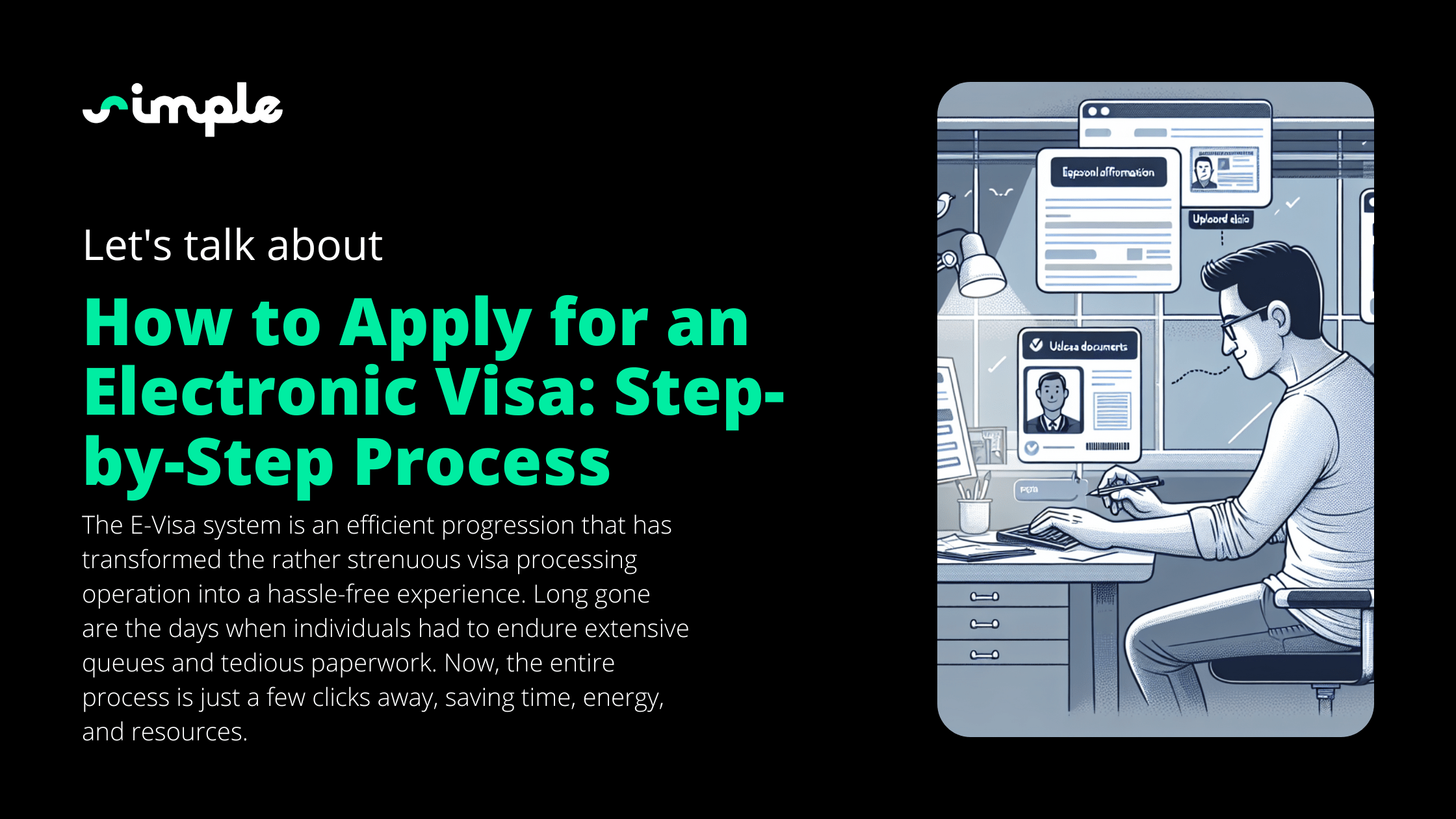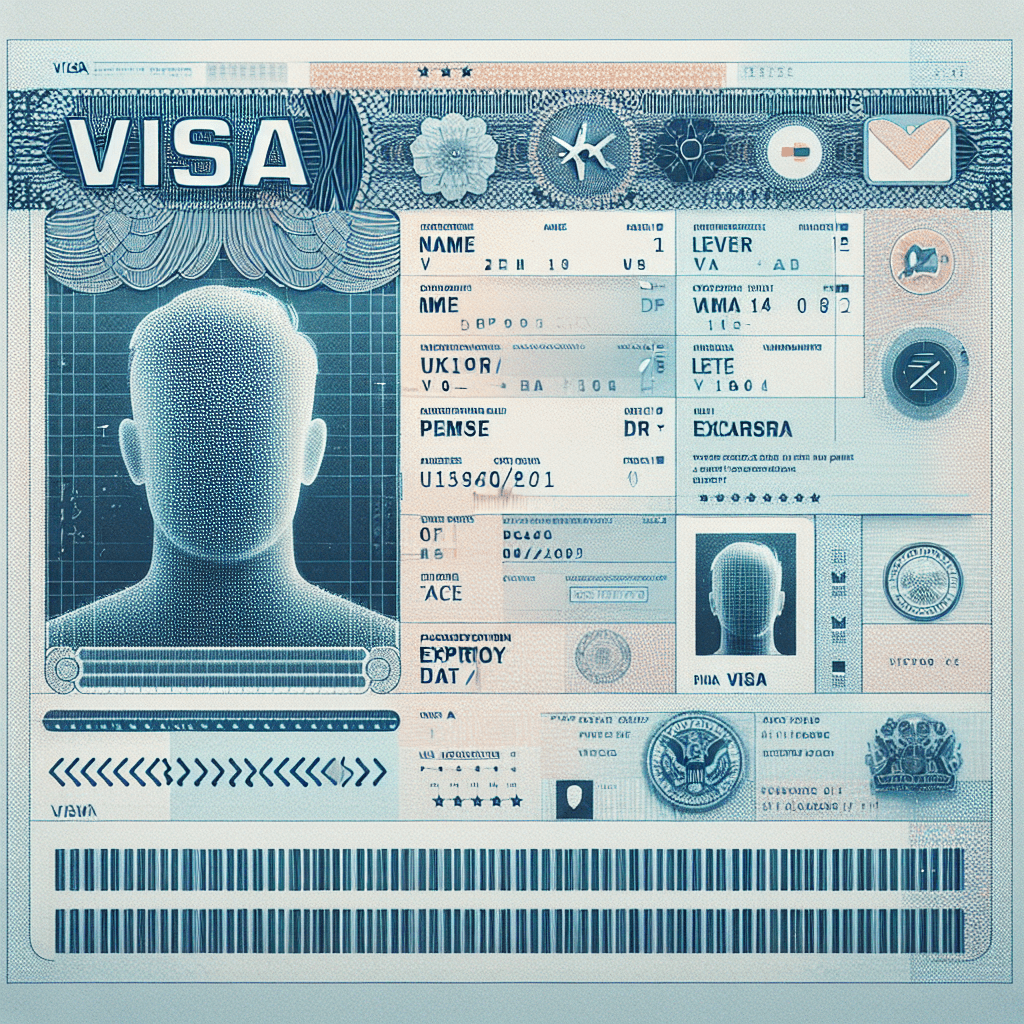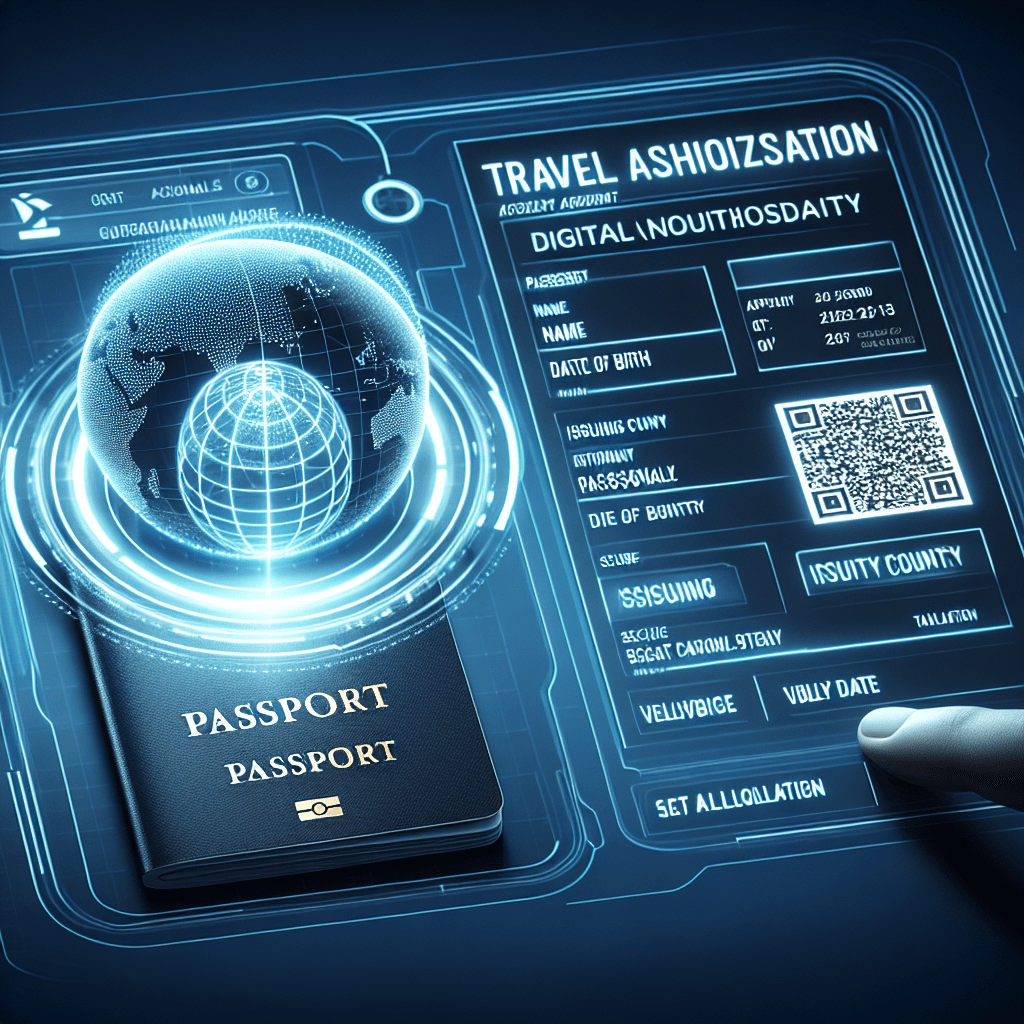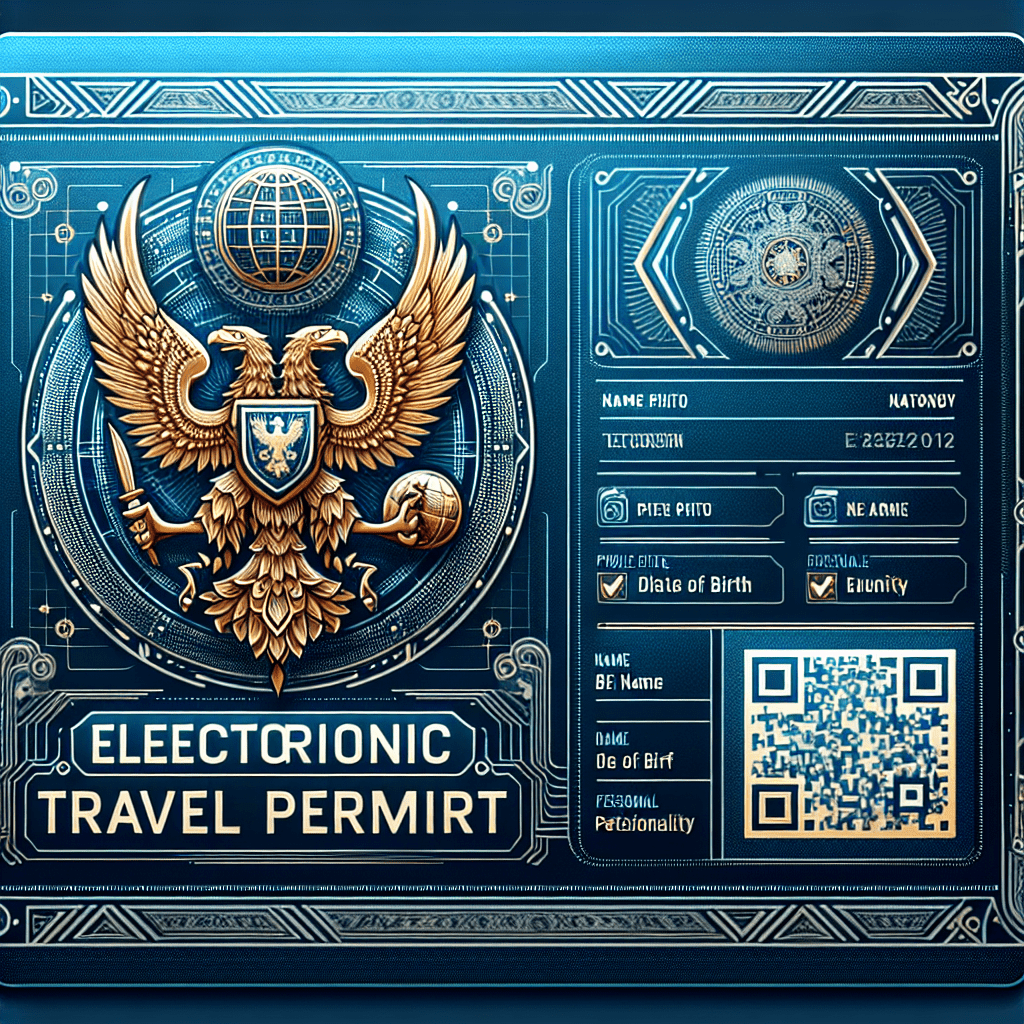How to Apply for an Electronic Visa: 3 Easy Steps

The world has evolved tremendously, embracing digitalization in every sector, and immigration services are no different. Among these significant advancements, the concept of an Electronic Visa (E-Visa) has revolutionized international travel. Unlike the traditional paper visa, an Electronic Visa is an official document that permits entry into and travel within a specific country. It is linked electronically to the traveler’s passport.
The E-Visa system is an efficient progression that has transformed the rather strenuous visa processing operation into a hassle-free experience. Long gone are the days when individuals had to endure extensive queues and tedious paperwork. Now, the entire process is just a few clicks away, saving time, energy, and resources.
E-Visas are a win-win, benefiting both the host country and the traveler. For the host country, the system promotes better management of visitor arrivals and departures, and for the traveller, it makes travel planning seamless. This writeup provides a comprehensive guide on how to apply for this digital travel authorization, detailing every step of the process, from application to approval. Embarking on your next journey could be, practically, only a click away.
Get ready to embrace this digital revolution in visa processing, that can make crossing borders a piece of cake.

Understanding What Electronic Visa Is
Providing a clear definition of Electronic Visa
An Electronic Visa, or E-Visa, refers to a digital equivalent of a traditional paper visa. Instead of having a sticker or stamp in your passport, as with a traditional visa, this electronic travel permit is electronically linked to your passport number. This streamlines the visa application process, as everything can be completed online from the comfort of your home, making it a preferable choice for tech-savvy travelers.
While traditional visas often require the applicant to make a physical appointment at a consulate or embassy, an E-Visa can be applied for, processed, and received digitally. This virtual travel visa system is now accepted and used by many countries around the world, from the United States and Canada to Australia and European Union countries.
Highlighting different types of Electronic Visa
E-Visas can be categorized into various types based on the countries issuing them, their validity, and the purpose of travel. For instance, a person traveling for leisure might require a different type of online tourist visa compared to someone traveling for business.
The logistics and limits of each visa can vary depending on certain factors. Some countries, for example, might only allow an E-Visa to be used once (single entry), while others permit multiple entries. The duration of stay and the validity period can also vary from one country to another. However, regardless of the type, receiving an electronic immigration document generally speeds up and simplifies the traditional visa application process.
Purpose and requisites for acquiring an Electronic Visa
E-Visas are ideally suited for travelers who wish to avoid the time-consuming and often complicated process of obtaining a traditional visa. They are also useful for last-minute travelers or those who do not live near a consulate or embassy of the country they wish to visit.
To be eligible for an E-Visa, the criteria can vary by country, but typically include having a valid passport, being in good health, having no criminal record, and having sufficient funds for your stay. The online visa application requires personal and travel information, and most countries also require a digital photo and occasionally additional documentation, depending on the purpose of the visit. After the e-visa submission, applicants typically receive their digital travel authorization via email.
Please note that an Electronic Visa does not guarantee entry. The immigration officer at the port of entry has the final say on allowing entry based on the information presented.

Concrete Steps to Applying for an Electronic Visa in 3 Steps
1/ Pre-application considerations
Before you begin your online visa application, first determine if you’re eligible for an electronic travel permit. Most countries mention the eligibility conditions on their official websites. After confirming that you can apply for an Electronic Visa, assemble all necessary documents and information. This typically includes a valid passport, a digital photograph, and a valid credit or debit card to pay for the application fee.
Some E-Visa services may require extra documents like an invitation letter, round trip ticket, or proof of accommodation. You might also need to provide details about past or planned travels. Keep all this information readily available to make the application process smoother. Your preparation is an integral part of the successful securing of the electronic entry permit.
2/ The application Process
Once you have gathered all the necessary documents and information, you can proceed with the online visa application. Navigate to the official E-Visa service offered by the particular country you’re traveling to. Fill in all of the details accurately and meticulously. Any error, no matter how small, can lead to your application being denied. Be sure to follow any provided instructions carefully.
After filling out the electronic travel document application, the next step typically involves uploading your digital photo and scanned copies of other required documents. Pay the requisite visa fee and then submit your form for processing. Keep in mind that the visa fee for an E-Visa approval system is non-refundable, even if your application is denied.
3/ Post-application stage
Post-application, remember to frequently check your e-mail. The average processing times for the E-Visa vary from country to country. In most instances, you will receive your E-Visa or a notice regarding its status within a couple of business days to a couple of weeks.
If your application was successful, you would receive a digital travel authorization. This can be presented at the port of entry, typically through a print-out or an electronic copy on your mobile device. But remember, the e-visa in itself does not guarantee entry. You will have to undergo immigration upon reaching your destination, and the decision to let you in is ultimately with the immigration officer.
If your application is denied, the rejection email should state the reason why. Most systems allow you to reapply after rectifying the issues in your initial application. In the worst-case scenario, you might have to opt for a conventional visa application. However, it’s crucial to understand that rejections are the exceptions rather than the rule in the E-Visa system.

Varied Aspects of Using an Electronic Visa
Traveling with an Electronic Visa
Traveling with an Electronic Visa simplifies the immigration process. Rather than presenting a physical visa document, your E-Visa, or digital travel authorization, is electronically linked to your passport. This linkage allows immigration officials to verify your visa status in their system automatically.
However, it’s a good idea to carry a printed copy of your E-Visa or have it available on your mobile device, as a backup. Some countries still require you to present a copy of your visa, despite the digital linkage. Yes, you can show it on your mobile device, but a print-out eliminates the risk of running into issues if your device battery dies or if you can’t access the document in your emails.
Advantages of Electronic Visa
The digital visa processing system offers several advantages. The convenience of applying from anywhere, anytime is a major highlight. No more unnecessary trips to an embassy or consulate or waiting in long lines. Everything can be done online, saving you time, hassle, and sometimes even money, considering the transport costs for in-person applications.
Furthermore, E-Visas promote efficiency and clarity with their online visa approval system; you get notified of your visa status swiftly and directly. No more guessing games or worrying about whether your visa was lost in the mail. Many users have found success with electronic visas and often prefer this method due to the convenience and simplicity it offers.
Troubleshooting and Support
Even with the E-Visa system’s ease and convenience, you might encounter issues during the application process or upon arrival at your destination. Some common problems include a declined payment, technical issues during application, or losing the email with your E-Visa approval.
If you face any of these issues, don’t panic. Most countries have dedicated support systems to assist you. The portal you applied your E-Visa through will likely have a customer service email or hotline. They can guide you on how to solve issues and even help you retrieve lost E-Visa document links.
Besides, there are also independent platforms and forums where E-Visa users share their experiences and advice. These resources can be priceless if you run into an unusual problem. Remember, the goal of the E-Visa service is to make your travel simpler and more convenient, and there are robust systems in place to ensure it does just that.

Embracing the E-Visa Revolution
The process of applying for and using an Electronic Visa has significantly revolutionized international travel by making it more efficient and less time-consuming. It’s a clear demonstration of how modern technology can transform bureaucratic processes into user-friendly experiences. The E-Visa system not only simplifies the application process but also contributes to sustainable tourism by reducing paper usage.
The vital lessons to take home from the Electronic Visa system are adaptability and efficiency. The system is adaptable, accommodating a wide range of tourists, from businessmen to backpackers. It’s also efficient, cutting down on the waiting time and physical effort needed to get a visa. In terms of digital transformation, the Electronic Visa system stands out as a ground-breaking application of internet technology in public administration.
Looking ahead to your future travel expeditions, an Electronic Visa could very well be the optimal choice for you. It offers convenience, speed, and simplicity. It reduces the paperwork and saves you from unnecessary travel to and from consulates or embassies. So, if you’ve not yet delved into the world of E-Visas, there’s no better time to consider it than now.
Ultimately, the ease and accessibility of these digital travel authorizations open doors for more spontaneous adventures and last-minute travel plans, allowing you to explore this beautiful world more freely. So why wait? Dive head-first into the ocean of opportunities offered by the E-Visa system, and experience the world like never before!